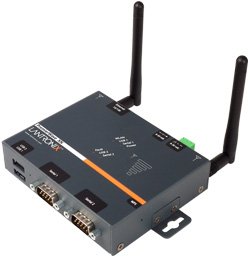Using Headers and Footers
This document describes how to add, format, and customize headers and footers in Microsoft Word 2008 for Macintosh. Headers and footers allow you to add information such as page numbers and dates to the format of your document.
Accessing the Header and Footer Tools
The
Header and Footer tools are located on the
Formatting Palette. These are tools that you will frequently use when working with headers and footers in your document. Use the following steps to access the
Header and Footer toolbar.
- From the View menu, select Header and Footer
ORDouble click on the HEADER or FOOTER region
The Header and Footer regions appear.
- On the ribbon, click TOOLBOX

The Toolbox appears.
NOTE: The Toolbox displays the Formatting Palette section by default. If the Formatting Palette does not display, click FORMATTING PALETTE .
.
- Select Header and Footer
The Header and Footer tools appear.

Header and Footer Tools Overview
There are multiple ways to manipulate your headers and footers. Using the following tools you should be able to properly format these areas to fit your needs.
| Button | Function |
|---|
 | Inserts the page number |
 | Inserts the number of pages |
 | Changes page number formatting |
 | Inserts the date |
 | Inserts the time |
 | Shows previous header or footer, shows next header or footer
NOTE: The previous and next options are relevant when your document is divided into sections |
 | Switches between header and footer |
 | Allows you to "go to" a specific header or footer section |
 | Makes the header or footer different on the first page of the section |
 | Makes header or footer different on odd and even pages |
 | Makes the header or footer the same as the previous section
NOTE: You can only link to previous sections if your document is divided into sections |
 | Hides document text |
 | Allows you to change the placement of the header or footer on your document |
Adding a Header or Footer
Headers and footers allow you to add information above and below the typing area of your document. You can add information such as the title of the document, author, date printed, chapter/section title, or
page numbers.
- From the View menu, select Header and Footer
ORDouble click on the Header or Footer region
The Header and Footer regions appear.
- In the document, place your insertion point in the Header region or the Footer region
- Type the desired text
HINT: Almost all formatting options (e.g., font, size, centering, tabs, and borders) that can be applied in the document can also be applied in headers and footers.
- When you are ready to return to your document, on the Header and Footer toolbar, click CLOSE

ORDouble click the document body
Formatting Headers and Footers for Even and Odd Pages
If you are working on a document that will be printed back-to-back and have facing pages (like a book), you may want to format your headers and footers differently according to whether they are on an even or odd page.
- From the View menu, select Header and Footer
ORDouble click on the Header or Footer region
The Header and Footer regions appear.
- On the ribbon, click TOOLBOX

The Toolbox appears.
NOTE: The Toolbox displays the Formatting palette section by default. If the Formatting palette does not display, click FORMATTING .
.
- Select Header and Footer
The Header and Footer tools appear.

- Select Different Odd and Even Pages
Labels appear designating the odd and even page footers.

- In the document, type the desired text for odd and even headers and footers
NOTE: Options for odd and even headers and footers will appear when your document is two or more pages in length.
HINT: Almost all formatting options (e.g., font, size, centering, tabs, and borders) that can be applied in the document can also be applied in headers and footers.
- When you are ready to return to your document, click CLOSE

ORDouble click the document body
Numbering Pages in Headers and Footers
- From the View menu, select Header and Footer
The Header and Footer regions appear.
- In the document, place your insertion point where you want the page number to appear
NOTE: Unless directed otherwise, Word will keep headers and footers consistent for all pages.
- On the ribbon, click TOOLBOX

The Toolbox appears.
NOTE: The Toolbox displays the Formatting palette section by default. If the Formatting palette does not display, click FORMATTING .
.
- In the Toolbox, select Header and Footer
The Header and Footer tools appear.

- In the Insert section, click INSERT PAGE NUMBER

The page number is inserted.
HINT: Almost all formatting options (e.g., font, size, centering, tabs, and borders) that can be applied in the document can also be applied in headers and footers.
- OPTIONAL: To remove page numbering from the first page,
- From the Insert menu, select Page Numbers…
The Page Numbers dialog box appears.
- Deselect the Show number on first page option
- Click OK
- When you are ready to return to your document, click CLOSE

OR Double click the document body
Make sure to let me know in the comments below or on our
Facebook page how you've got with it or Do you have any questions
on the EQUATION button » select the equation you need

